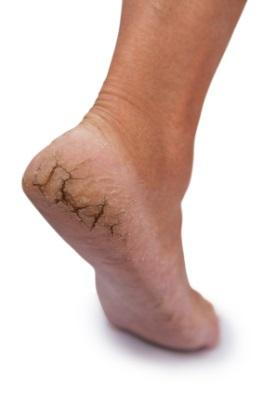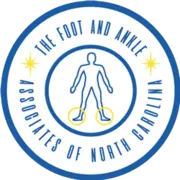 If you have ever experienced a condition that is known as heel fissures, you are most likely familiar with the discomfort it may cause. This unsightly ailment may also be referred to as cracked heels, and may cause difficulty in walking and standing. This condition may develop in anyone and may typically occur if standing is done for most of the day, or if open-back shoes are worn, which may provide minimum support. Additionally, people who are obese may notice symptoms of cracked heels and this may be a result of the additional weight the heels must endure. These signs may include the skin on the heel appearing thickened and dry, and small cracks in the skin may begin to form. Research has shown there may be measures that can be taken to prevent cracked heels from developing, which may include washing and drying the feet thoroughly, followed by utilizing a good moisturizer, and wearing shoes that provide adequate support for the heel. If you have developed this condition, it is suggested to speak with a podiatrist, so the correct treatment can begin.
If you have ever experienced a condition that is known as heel fissures, you are most likely familiar with the discomfort it may cause. This unsightly ailment may also be referred to as cracked heels, and may cause difficulty in walking and standing. This condition may develop in anyone and may typically occur if standing is done for most of the day, or if open-back shoes are worn, which may provide minimum support. Additionally, people who are obese may notice symptoms of cracked heels and this may be a result of the additional weight the heels must endure. These signs may include the skin on the heel appearing thickened and dry, and small cracks in the skin may begin to form. Research has shown there may be measures that can be taken to prevent cracked heels from developing, which may include washing and drying the feet thoroughly, followed by utilizing a good moisturizer, and wearing shoes that provide adequate support for the heel. If you have developed this condition, it is suggested to speak with a podiatrist, so the correct treatment can begin.
Cracked heels are unsightly and can cause further damage to your shoes and feet. If you have any concerns, contact one of our podiatrists of The Foot and Ankle Associates of North Carolina, PLLC. Our doctors can provide the care you need to keep you pain-free and on your feet.
Cracked Heels
Cracked heels are unappealing, and make it harder for you walk around in sandals. Not only may they look bad, but they can also tear stockings, socks, and wear out your shoes. There are several methods to help restore a cracked heel and prevent further damage.
How do you get them?
Dry skin is the number one culprit in creating cracked heels. Many athletes, walkers, joggers, and even swimmers suffer from cracked heels. Age and skin oil production play a role to getting cracked heels as well.
Promote Healing
Over the counter medicines can help, especially for those that need instant relief, or who suffer from chronic dry feet.
Wear Socks – wearing socks with medicated creams, helps lock in moisture so it can stay on longer.
Moisturizers – applying it both day and night will help alleviate dryness which causes cracking.
Pumice Stones – these remove dead skin, and then you can massage cream onto your foot. This way the cream will be absorbed. The skin needs to be exfoliated; therefore, the outer layer dead skin needs removal.
Change in Diet
Eating healthy, with a well-balanced diet, will give the skin a fresh and radiant look. Your body responds to what kinds of food you ingest. Omega-3 fatty acids and zinc supplements will also help with skin tissue.
Most importantly seek a health professional for foot care if something is wrong or doesn’t seem to be working. A podiatrist will help you with any questions or information needed.
If you have any questions, please feel free to contact one of our offices located in Ahoskie, Durham, Raleigh, and Rocky Mount, NC. We offer the newest diagnostic and treatment technologies for all your foot care needs.

